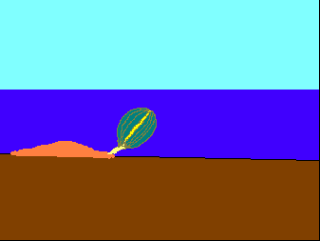| It all starts with the death of a creature, in this case a brachiopod. The animal settles to the bottom, the fleshy parts decay away. Next sediment covers the remains, and water seeping through the sediment causes the molecules of the animal to be gradually replaced by silica. Sediment piles up higher and the pressure starts to change the sediment into limestone. Eventually the animal's remains are encased in limestone. Through the process of plate tectonics, the limestone is pushed up above the level of the sea where wind, rain, and chemical reactions begin to break it down. The rock erodes away leaving the silicified remains etched out in bold relief from the softer limestone. |  |